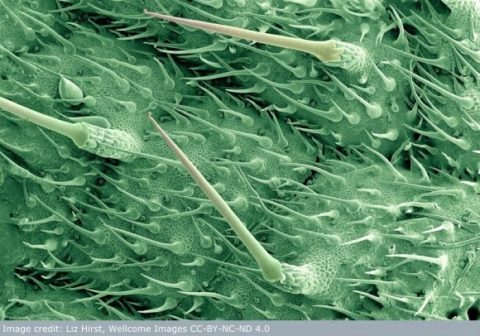Wellcome Images describes its 100,000 strong collection of high-resolution images as “one of the world’s richest and most unusual collections”. You cannot deny that making a nettle sting the subject of a photo is an unusual thing to do:

The image above is a colourised scanning electron micrograph of the sting cells of a nettle leaf (Urtica dioica). The stings themselves are hollow spikes of silica (sand/glass) that snap easily when your bare knees or other body part brush against the leaves. The stinging contents of the spikes are released from a bulb at the base and contain formic acid (same as ant venom), histamine (also in wasp stings and the same inflammatory chemical released by our bodies when we have allergies), acetylcholine and serotonin (neurotransmitters that stimulate our nervous system), a chemical concoction that is the perfect recipe for pain.
There is no evidence that rubbing a dock leaf on a nettle sting has anything more than a placebo effect, but that can be sufficient when it is temporary, acute pain anyway!
As I’ve discussed before on Sciencebase, nettles are the only plant on which brush-footed butterflies will lay their eggs.